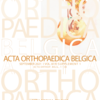Prevalence and influence of tibial tunnel widening after isolated anterior cruciate ligament reconstruction : a comparative graft analysis – long-term follow-up
anterior cruciate ligament reconstruction ; IKDC-score ; tibial tunnel widening ; graft analysis ; osteoarthritis
Published online: Oct 08 2021
Abstract
A retrospective study was conducted to evaluate incidence, degree and impact of tibial tunnel widening (TW) after isolated anterior cruciate ligament re- construction using patella-bone-tendon-bone (PBTB) or semitendinosus tendon (STS) autograft.
Postoperatively mid- and long-term clinical outcome, knee joint stability and prevalence of osteoarthritis (OA) were evaluated. Evaluation was performed clinically using different scores, an arthrometer and radiographically.
On long-term follow-up >75% of patients were graded A or B according to the IKDC-score in both groups. Mean Lysholm score was 90.2 ± 4.8 (PBTB) vs. 88.2 ±3.7 (STS) ; mean Tegner score was 4.9 (PBTB) vs. 4.8 (STS). We found slight differences in the amount of TW in the comparative graft analysis with predominance of the STS subgroup but without clinical impact. There was no statistically significant progression of TW in comparison to the midterm results with slight predominance of TW in the STS group. Radiological evaluation showed degenerative changes of a grade I/II OA in about 60% of patients. Prevalence of a grade III or grade IV OA was found in about 25% in both groups without any significant intergroup difference. Correlation analysis showed no significant relationship between the amount of tibial TW (p>0.05), long-term clinical results, anterior joint laxity or prevalence of OA in both groups.
Tibial TW seems to be a radiological phenomenon most commonly observed within the short to midterm intervals. There is no adverse effect on long-term clinical outcome and stability. Furthermore, it does not constitute for an increasing prevalence of osteo- arthritis.
